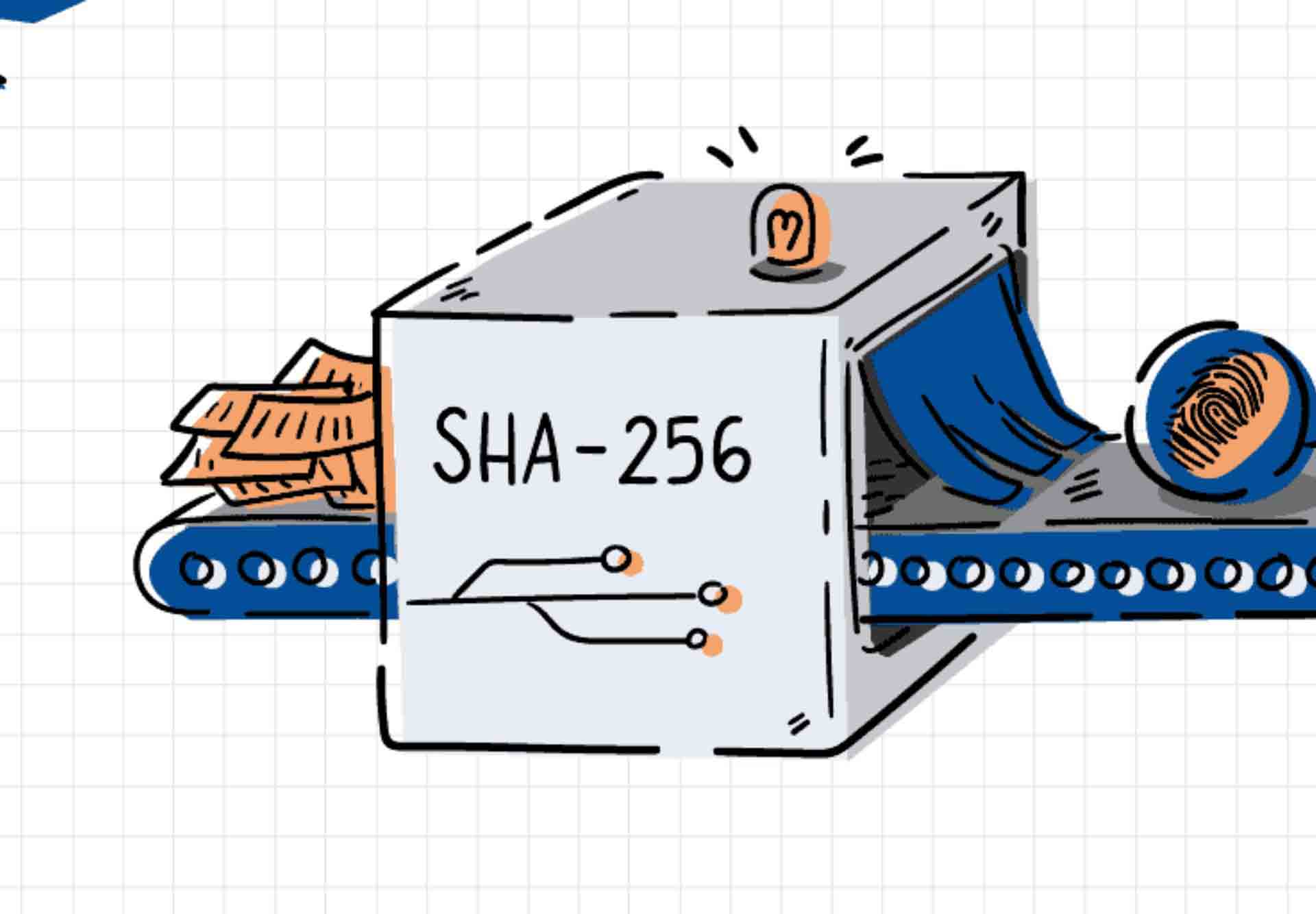SHA-256 is the formula that keeps Bitcoin almost impossible to hack.
- It is an important part of the proof-of-work method for Bitcoin.
- What is SHA-256, and is it really impossible to hack?
People often say that Bitcoin is almost impossible to hack, but what makes it so safe? The not-so-secret ingredient is SHA-256, which is the hashing method that makes it harder to crack the Bitcoin blockchain than a diamond Easter egg. What is SHA-256, though, and why is it so safe? Let’s find out.
Fingerprints and Bits
SHA-256 (Secure Hash Algorithm 256-bit) is a cryptographic hash function that takes in a message or data of any length and gives back a fixed-size result of 256 bits. The main job of a hash function is to make a unique digital record, or “hash value,” from the data that is given to it. Typically, this fingerprint is used to confirm that the original data has not been modified. A different hash value will be generated from the same data if even a single character is changed in the input.
People think the SHA-256 method is very safe because it resists collision attacks. This implies that finding two input values that result in the same hash value is difficult. SHA-256 is used in many places to make sure that data is secure and correct, like digital signatures, password storage, and blockchain technology.
The Backbone of Bitcoin Mining
The SHA-256 algorithm is an important part of the protection of the Bitcoin blockchain. It is used to make the proof-of-work algorithm, which is needed to check and add new blocks to the blockchain. Bitcoin miners compete to solve a complicated math puzzle by repeatedly hashing a block of Bitcoin transactions using this algorithm. The first miner to deduce the correct hash value and uploading a new block to the network is awarded bitcoins.
So that blocks can be added to the blockchain at a steady rate, the difficulty of the mathematical puzzle is periodically modified. What makes the Bitcoin network secure and resistant to tampering is the procedure by which new blocks are verified and added to the blockchain using the SHA-256 algorithm.
Also, since the SHA-256 method gives each block a unique hash value, any attempt to change a block’s contents would require recalculating the block’s hash value as well as the hashes of every block after it in the chain. As it would take so much time and energy to recalculate all the hashes in the chain, tampering with the blockchain is computationally expensive and complex.
Will Quantum Computing Put an End to Bitcoin?
Some people have said that SHA-256 can be broken with quantum computing, but this is just a theory at this point. Quantum bits, or qubits, can exist in more than one state at once, making quantum computing fundamentally different from classical computing. This means that quantum computers can do some calculations much faster than traditional computers. One thing that quantum computing could be used for is to break popular encryption methods like SHA-256.
But it’s still early in the process of making a quantum computer powerful enough to break SHA-256 and other cryptographic methods. You would need thousands or even millions of qubits and a very stable quantum system to do the necessary calculations. If someone could hack into the private communications of a government with which they disagreed ideologically, they probably wouldn’t waste their time trying to hack the Bitcoin blockchain instead.
Also, scientists are working hard to make new cryptographic methods that quantum attacks can’t break. This is called “post-quantum cryptography.” So, even if a powerful quantum computer is developed in the future, the security of systems that now employ SHA-256 and other cryptographic functions can be protected using alternative cryptographic algorithms.

